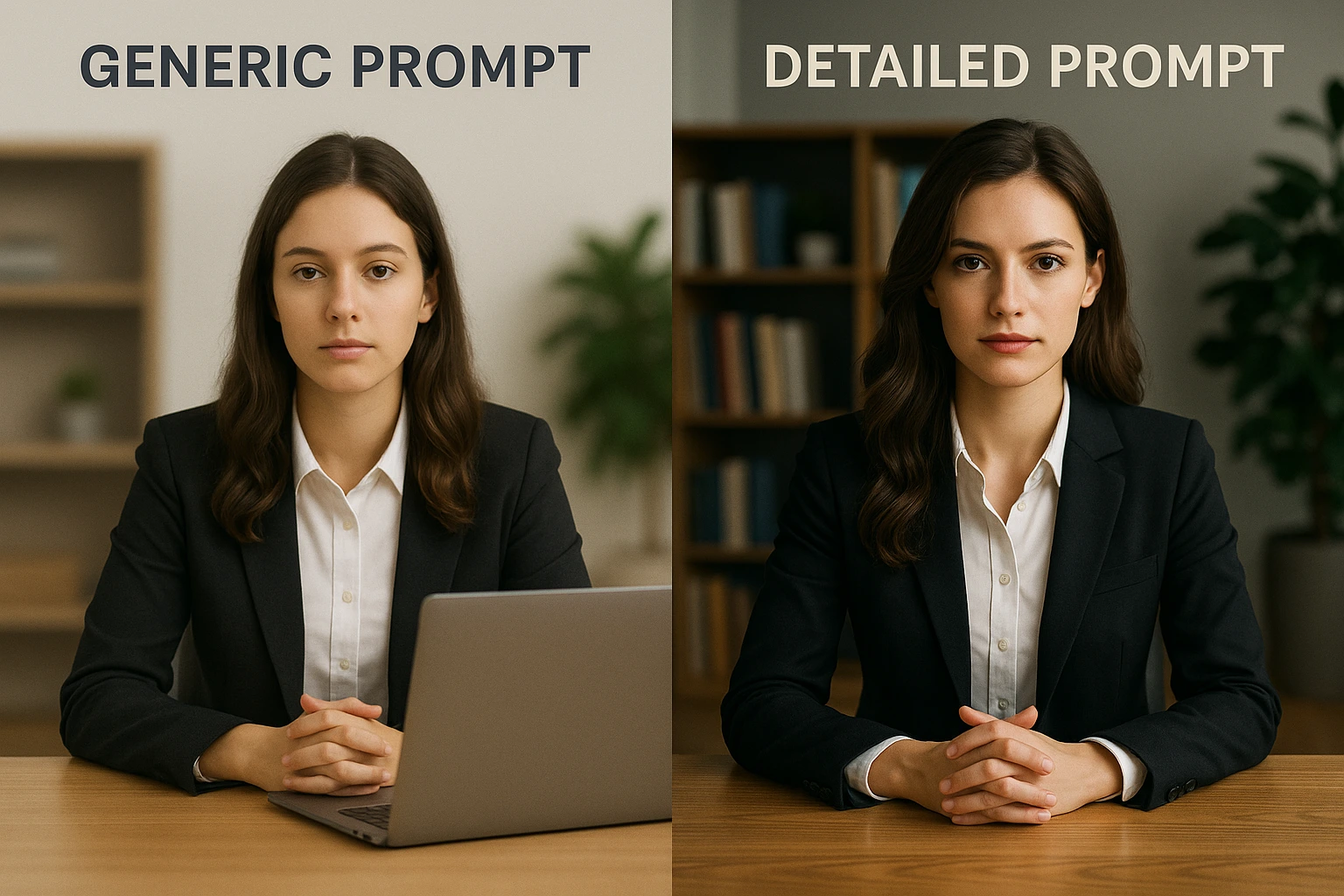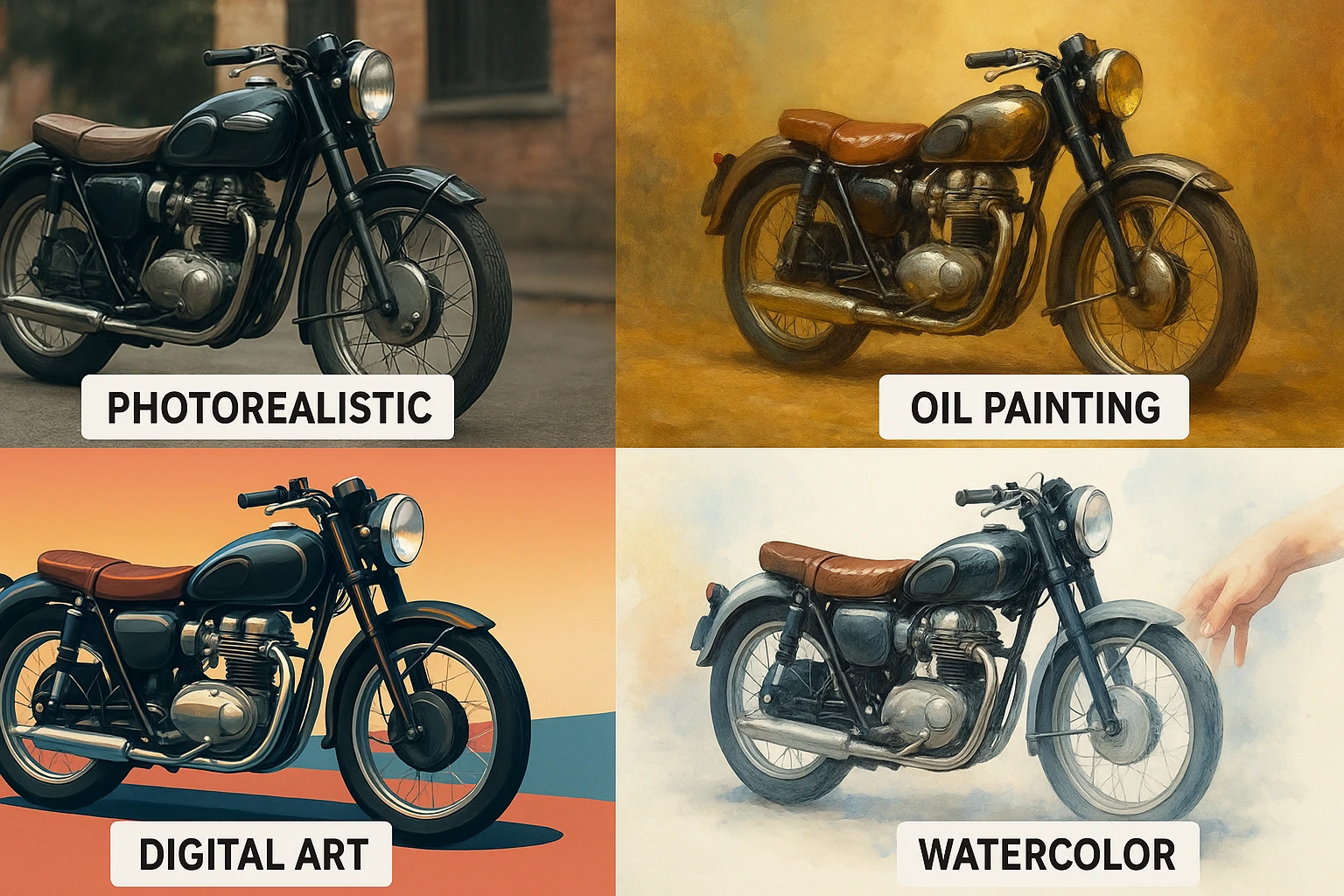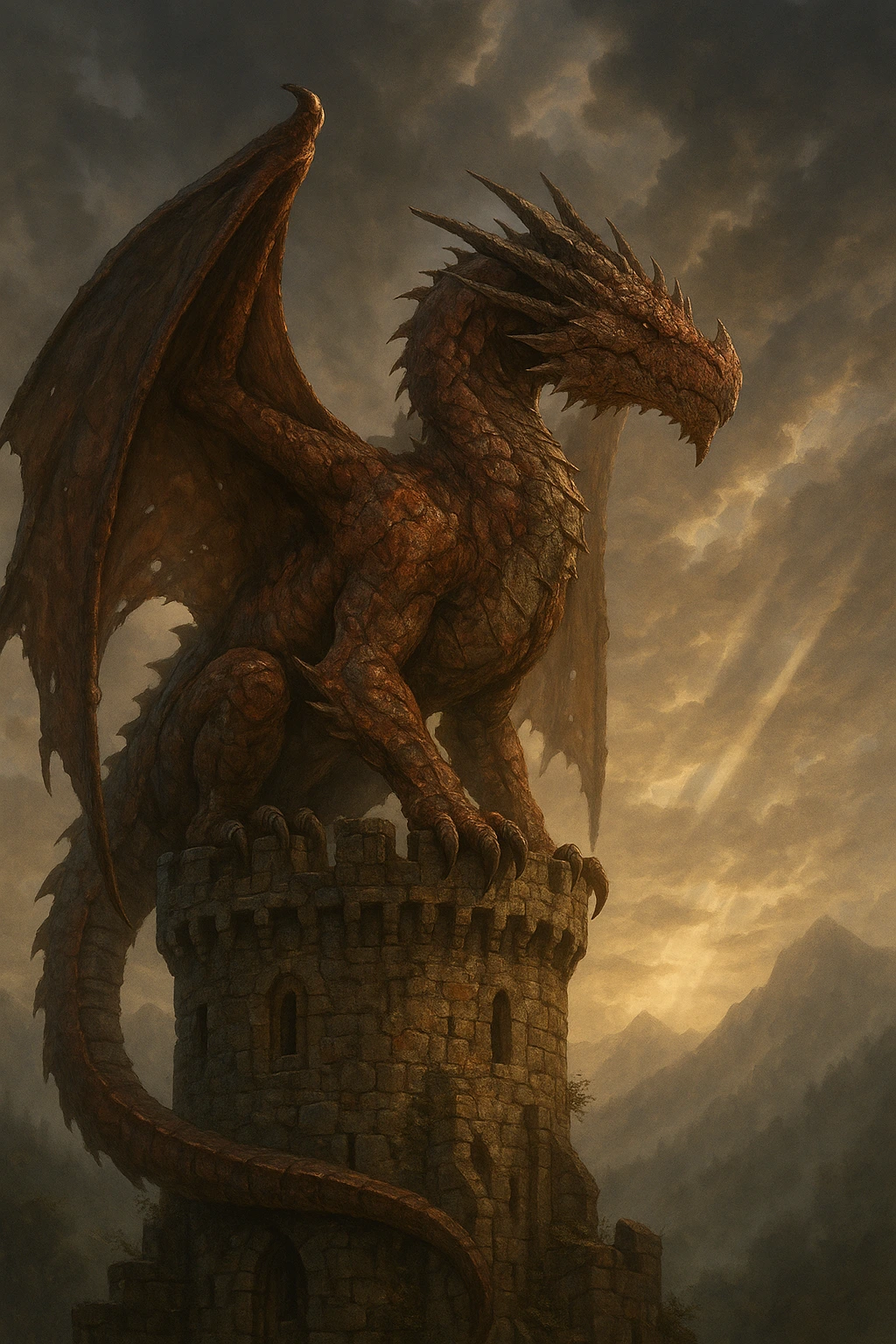- Blog
- Mastering AI Image Prompts: The Complete Guide to Creating Stunning Visuals in 2025
Mastering AI Image Prompts: The Complete Guide to Creating Stunning Visuals in 2025
Mastering AI Image Prompts: The Complete Guide to Creating Stunning Visuals in 2025
Last week, I watched a friend struggle for hours trying to get an AI image generator to create what she had in mind. She'd type "beautiful landscape" and get generic stock-photo-looking results. Then I showed her one simple trick that changed everything.
The difference between amateur and professional AI-generated images often comes down to one thing: how you write your prompts. After generating thousands of images and helping dozens of creators master this skill, I've learned that prompt writing is both an art and a science.
Why Most People Struggle with AI Image Prompts
Before diving into techniques, let's address the elephant in the room. Most people approach AI image generation like they're talking to a human artist. They'll say something like "make it look cool" or "add some style to it."
But here's the thing: AI doesn't understand vague concepts the way humans do. It needs specific, descriptive language to translate your vision into pixels.

Caption: Left: "beautiful woman" - Right: "portrait of a confident woman in her 30s, soft natural lighting, wearing a cream-colored sweater, gentle smile, photographed with a 85mm lens, shallow depth of field"
The Anatomy of a Perfect AI Image Prompt
After analyzing hundreds of successful prompts, I've identified a formula that works consistently:
1. Subject Description (The Foundation)
Start with exactly what you want to see. Be specific about:
- Physical characteristics: Age, gender, clothing, pose
- Objects: Size, material, condition, purpose
- Animals: Breed, age, activity, environment
Instead of: "a dog" Try: "a golden retriever puppy, 3 months old, sitting on grass"
2. Environment & Setting (The Stage)
Where is your subject located? This context dramatically affects the mood:
- Location: Indoor/outdoor, specific places
- Time: Day/night, season, era
- Weather: Sunny, rainy, foggy, snowy
Example: "in a cozy coffee shop during autumn afternoon, warm lighting streaming through large windows"
3. Style & Artistic Direction (The Flavor)
This is where your creativity shines:
- Art styles: Photorealistic, oil painting, watercolor, digital art
- Famous artists: "in the style of Van Gogh" or "Ansel Adams photography"
- Movements: Impressionist, minimalist, baroque, cyberpunk
4. Technical Parameters (The Polish)
These details elevate amateur work to professional quality:
- Camera settings: "shot with 85mm lens, f/1.4 aperture"
- Lighting: "golden hour lighting," "studio lighting," "dramatic shadows"
- Quality modifiers: "highly detailed," "8K resolution," "professional photography"
Advanced Prompt Techniques That Actually Work
The Layering Method
Instead of cramming everything into one sentence, build your prompt in layers:
Layer 1: Subject - "A vintage motorcycle"
Layer 2: Details - "1960s Triumph Bonneville, chrome details, leather seat"
Layer 3: Environment - "parked outside a retro diner at sunset"
Layer 4: Style - "shot in film photography style, warm color grading"
Layer 5: Technical - "35mm film, shallow depth of field, golden hour lighting"
Final prompt: "A vintage 1960s Triumph Bonneville motorcycle with chrome details and leather seat, parked outside a retro diner at sunset, shot in film photography style with warm color grading, 35mm film, shallow depth of field, golden hour lighting"
The Negative Prompt Strategy
Sometimes it's easier to tell the AI what you DON'T want:
- "no text, no watermarks, no blurry details"
- "avoid oversaturated colors, no cartoon style"
- "exclude modern elements, no digital artifacts"
The Reference Mixing Technique
Combine multiple reference points for unique results: "Combine the lighting of a Rembrandt painting with the composition of a Wes Anderson film and the color palette of a Studio Ghibli movie"
Common Prompt Mistakes (And How to Fix Them)
Mistake #1: Being Too Vague
Bad: "Make it artistic" Good: "Rendered in watercolor style with soft, flowing brushstrokes and muted pastel colors"
Mistake #2: Contradictory Instructions
Bad: "Photorealistic cartoon character" Good: "3D rendered character with realistic textures but stylized proportions"
Mistake #3: Overloading with Keywords
Bad: "Beautiful gorgeous stunning amazing incredible fantastic wonderful" Good: "Elegant and refined with subtle beauty"
Mistake #4: Ignoring Aspect Ratios
Always specify your intended use:
- "Square composition for social media"
- "Wide landscape format for desktop wallpaper"
- "Vertical portrait orientation for mobile"
Style-Specific Prompt Formulas
For Photorealistic Images:
"[Subject], professional photography, [lighting type], shot with [camera/lens], [composition], highly detailed, 8K resolution"
For Artistic Styles:
"[Subject], [art medium] painting, [artist reference or movement], [color palette], [mood/atmosphere], masterpiece quality"
For Fantasy/Sci-Fi:
"[Subject], [fantasy/sci-fi elements], [environment], [lighting effects], concept art style, highly detailed, digital painting"
 Caption: One prompt formula adapted for photorealistic, oil painting, and digital art styles
Caption: One prompt formula adapted for photorealistic, oil painting, and digital art styles
Tools and Resources for Better Prompting
Prompt Generators and Helpers
While I believe in learning the fundamentals, these tools can spark creativity:
- PromptHero: Browse successful prompts by category
- Lexica: Search through millions of AI-generated images with their prompts
- Prompt databases: Collections of tested, working prompts
Testing and Iteration
The best way to improve is through systematic testing:
- Start with a basic prompt
- Generate the image
- Identify what's missing or wrong
- Add specific descriptors to address issues
- Regenerate and compare
- Repeat until satisfied
Advanced Techniques for Power Users
Prompt Weighting
Some AI systems allow you to emphasize certain elements:
- "Beautiful landscape (mountains:1.5) with (lake:0.8) and (trees:1.2)"
- Numbers indicate relative importance
Sequential Prompting
For complex scenes, break them into steps:
- Generate the background
- Add the main subject
- Refine lighting and details
- Apply final style adjustments
Style Transfer Prompting
"Take the composition of [image A] and apply the style of [description B]"
Troubleshooting Common Issues
When Your Images Look Generic
- Add more specific descriptors
- Include unusual or unique elements
- Reference specific time periods or locations
- Combine unexpected style elements
When Details Are Wrong
- Use negative prompts to exclude unwanted elements
- Be more specific about positioning and relationships
- Add technical photography terms for better quality
When Colors Are Off
- Specify exact color palettes
- Reference color temperature (warm/cool)
- Mention specific color relationships
The Future of AI Prompt Engineering
As AI image generation evolves, prompt writing is becoming more sophisticated. We're seeing:
- Natural language improvements: AI understanding conversational prompts better
- Visual prompt references: Using images as part of prompts
- Style consistency: Better control over maintaining style across multiple images
Putting It All Together: A Real Example
Let me walk you through creating a prompt for a fantasy book cover:
Initial idea: "Dragon and castle"
Step 1 - Subject details: "Ancient red dragon with weathered scales perched on a crumbling medieval castle tower"
Step 2 - Environment: "Misty mountain landscape at dawn, with storm clouds gathering in the distance"
Step 3 - Style: "Epic fantasy art style, reminiscent of classic book cover illustrations"
Step 4 - Technical: "Dramatic lighting with rays of sunlight breaking through clouds, highly detailed, digital painting, 8K resolution"
Final prompt: "Ancient red dragon with weathered scales and battle scars perched on a crumbling medieval castle tower, misty mountain landscape at dawn with storm clouds gathering in the distance, epic fantasy art style reminiscent of classic book cover illustrations, dramatic lighting with rays of sunlight breaking through clouds, highly detailed digital painting, 8K resolution, vertical composition"
 Caption: The final result using our step-by-step prompt building method
Caption: The final result using our step-by-step prompt building method
Your Next Steps
Mastering AI image prompts isn't about memorizing formulas—it's about understanding how to communicate your vision clearly and specifically. Start with these fundamentals:
- Practice daily: Generate at least one image per day using these techniques
- Study successful prompts: Analyze what works in images you admire
- Keep a prompt journal: Document what works for your style
- Experiment boldly: Try unexpected combinations and learn from failures
The AI image generation landscape is evolving rapidly, but these core principles will serve you well regardless of which tool you use. Whether you're creating art for personal projects, business marketing, or pure creative expression, the ability to craft effective prompts is your gateway to unlimited visual possibilities.
Remember: every expert was once a beginner who refused to give up. Your perfect prompt is just one iteration away.
Ready to put these techniques into practice? Try them out with PictoFlux AI and see the difference that well-crafted prompts can make. Share your best results with us on social media using #PictoFluxPrompts!
